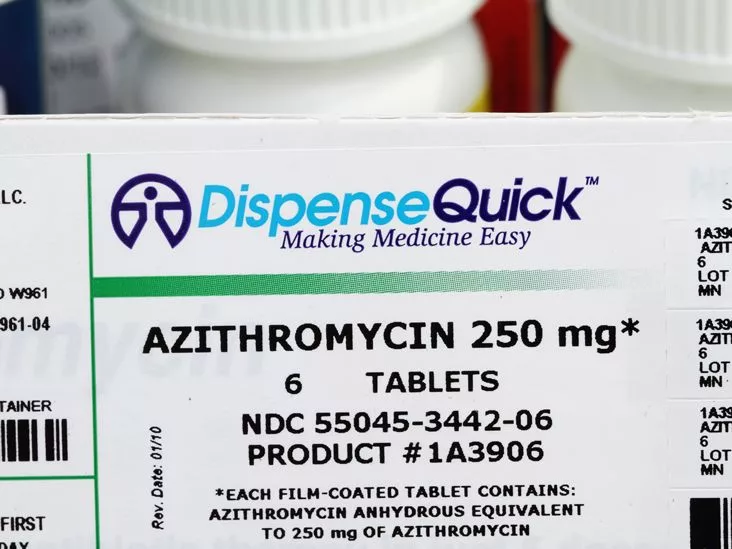Imagine you’re at the doctor’s office, feeling the familiar ache in your chest, and the doctor writes you a prescription for azithromycin. You leave, hoping your insurance will take care of the bill, but then the “cost” surprise hits you. You’re not alone—many seniors and retirees wonder exactly how Medicare azithromycin coverage works. In the next few minutes, I’ll walk you through everything you need to know, from the parts of Medicare that handle prescriptions to the little tricks that can keep your out‑of‑pocket costs down. Grab a cup of coffee, settle in, and let’s figure this out together.
Quick Answer Overview
Yes, Medicare can cover azithromycin. The coverage depends on the form of the drug and the Medicare part you’re enrolled in:
- Part D (stand‑alone prescription‑drug plans) – covers oral tablets, capsules, and liquid suspensions.
- Part B (out‑patient medical insurance) – covers intravenous (IV) azithromycin given in a doctor’s office or clinic.
- Part C (Medicare Advantage) – most plans bundle Part D drug coverage, so azithromycin is usually included if the plan’s formulary lists it.
If you need the drug, the next steps are to check your plan’s formulary, understand any tier or prior‑auth requirements, and explore cost‑saving options. Below is a deeper dive.
Medicare Parts Overview
What Each Medicare Part Does for Drugs
Medicare is split into several “parts,” each handling a different slice of health care:
- Part A – Hospital insurance (covers inpatient stays, but not most outpatient prescriptions).
- Part B – Medical insurance (covers doctor visits, outpatient services, and some drugs administered by a health professional, like IV azithromycin).
- Part C – Medicare Advantage (private plans that combine A, B, and usually D into one package).
- Part D – Stand‑alone prescription‑drug plans (or the drug component of many Advantage plans).
Think of it like a pizza: Part A and B give you a basic slice, while Part C is a combo deal, and Part D adds the extra topping of pharmacy coverage. If you’re wondering which part will foot the bill for your azithromycin prescription, the answer lies in how the drug is administered.
Why Azithromycin Needs Prescription‑Drug Coverage
Azithromycin (brand name Zithromax) is a macrolide antibiotic used for a host of bacterial infections—pneumonia, certain sexually transmitted infections, COPD flare‑ups, ear infections, and more. Because it’s prescription‑only, you’ll need a plan that covers prescription drugs. According to eHealthInsurance, antibiotics are generally covered under Medicare Part D for oral forms and under Part B when given by infusion.
Azithromycin Formulary Fit
Part D (Standalone Prescription‑Drug Plans)
Most oral forms of azithromycin—tablets, capsules, and liquid suspension—appear on Part D formularies as Tier 1 or Tier 2 drugs. That means relatively low copays for most beneficiaries. In 2025, the typical cost for a generic 500 mg tablet ranged from $13 to $21, while the branded version (Zithromax) fell between $23 and $47 (MedicalNewsToday reports).
Part B (Outpatient‑Infusion Coverage)
If you receive azithromycin intravenously—perhaps because you’re being treated for severe pneumonia in an outpatient clinic—Part B steps in. After you meet the annual Part B deductible (about $257 in 2025), Medicare typically pays 80 % of the infusion cost, leaving you with roughly a 20 % coinsurance. This coverage is especially helpful for those who can’t swallow pills or need a higher dose quickly.
Part C (Medicare Advantage)
Most Medicare Advantage plans bundle prescription‑drug coverage (often called MA‑PD). If you’re enrolled in a Part C plan, check the plan’s drug formulary; azithromycin is usually covered, sometimes at a preferred‑brand tier that reduces your copay even further. Remember, Advantage plans can vary widely, so a quick look at the plan’s drug list is essential.
Coverage by Medicare Part
| Medicare Part | Form Covered | Typical Tier | Patient Cost (2025) | Coinsurance / Copay |
|---|---|---|---|---|
| Part D (stand‑alone) | Tablets, suspension, drops | Tier 1‑2 | $13‑$21 (generic), $23‑$47 (brand) | $0‑$10 copay |
| Part B | IV infusion (office‑based) | N/A | $0‑$30 (depends on deductible) | 20 % after deductible |
| Part C (MA‑PD) | All above (if on formulary) | Varies by plan | Same as Part D or lower | Plan‑specific |
Check Your Coverage
Step‑by‑Step: Verify Your Plan’s Formulary
Here’s a quick, no‑stress routine you can run on your computer or phone:
- Log into myMedicare.gov (or your private insurer’s portal).
- Navigate to the “Drug Formulary” section and type “azithromycin.”
- Note the tier, any prior‑authorization (PA) requirement, and the listed copay.
- Write down the information or screenshot it for easy reference.
If azithromycin isn’t listed, don’t panic. There are two common fixes.
If It’s Missing: What to Do
First, call the pharmacy benefit manager (PBM) and ask for a “formulary exception.” Explain that your doctor prescribed azithromycin for a specific infection and that a suitable alternative isn’t appropriate. Most PBMs will review the request within a few days.
Second, consider switching to a generic version if your plan differentiates them. Generic azithromycin is just as effective for most infections and usually lands on a lower tier.
Finally, if you’re in the open enrollment window (Oct 15 – Dec 7), you can compare other Part D plans. Even a small formulary tweak could shave $10–$20 off the copay.
Quick‑Reference Checklist (Downloadable PDF)
Feel free to print this concise checklist and bring it to your next pharmacy visit. It includes the steps above and a space to jot down plan details.
Cost‑Saving Strategies
Premiums, Deductibles & Out‑of‑Pocket Maximums (2025)
Understanding the larger picture helps you avoid surprise bills:
- Part D deductibles are capped at $590 for 2025 (they’ll rise slightly in 2026).
- The out‑of‑pocket maximum for Part D is $2,000 this year.
- Part B’s deductible sits at $257, after which Medicare covers 80 % of approved services.
Ways to Lower Your Out‑of‑Pocket Cost
- Choose generic whenever possible. The price difference can be as much as $30 per prescription.
- Shop around. Large‑chain pharmacies often have lower cash prices than independent stores.
- Use manufacturer coupons. Several pharma companies offer free‑shipping coupons for azithromycin; just search “azithromycin coupon” and follow the official link.
- Enroll in a Medicare Savings Program. If your income qualifies, you may qualify for reduced Part B premiums and lower deductibles.
Example Cost Comparison
| Scenario | Plan Type | Azithromycin Cost per Prescription | Annual Out‑of‑Pocket (estimate) |
|---|---|---|---|
| Jane – Standard Part D | Standalone | $15 generic tablet | $150 (10 scripts) |
| Mike – Medicare Advantage | MA‑PD, preferred tier | $5 copay | $50 (10 scripts) |
| Sam – Part B infusion | Part B | $30 (after deductible) | $30 (single infusion) |
Benefits vs Risks
Why Doctors Prescribe Azithromycin
Azithromycin is beloved by clinicians for a few key reasons:
- Broad‑spectrum coverage—it hits many common bacteria.
- Convenient dosing. A typical 5‑day course often involves a single large dose on day 1 followed by smaller daily doses.
- Good safety profile for most adults, with fewer gastrointestinal side effects than older antibiotics.
Potential Risks & Medicare’s Safeguards
Like any medication, azithromycin isn’t risk‑free. Notable concerns include:
- Cardiac effects. In patients with existing QT‑interval issues, the drug can increase the risk of abnormal heart rhythms. Many Part D formularies flag this and may require a prior‑auth when a prescriber notes a heart condition.
- Antibiotic resistance. Overuse can make bacteria tougher to treat. Medicare’s prior‑auth process helps ensure the drug is truly needed.
- Allergic reactions. Rashes, hives, or severe anaphylaxis are rare but possible. If you’ve had a reaction to macrolides before, let your provider know.
Medicare’s role isn’t just to pay the bill—it’s also to help keep you safe. By reviewing prior‑auth requests and monitoring high‑risk patients, the system can catch potential misuse before it becomes a problem.
Real‑World Experience Stories
Expert Insight – Geriatric Pharmacist
“When an older adult needs azithromycin, I first check if the drug is on their Part D formulary and what tier it sits on,” says Linda Martinez, a certified geriatric pharmacist with 20 years of experience. “If the plan requires prior‑auth, I work with the prescriber to submit the clinical justification quickly so the patient isn’t left without medication.”
Patient Story – Mike’s Hospital Stay
Mike, 68, was admitted for community‑acquired pneumonia. While in the hospital, he received IV azithromycin under Part A coverage. After discharge, his doctor wrote a prescription for oral tablets. Because Mike’s original Part D plan listed azithromycin on a high‑tier, his out‑of‑pocket jumped to $30 per refill. He switched to a Medicare Advantage plan during the open enrollment period, which placed the drug on a preferred tier, reducing his copay to $5. “That saved me more than $150 in a single season,” he says, smiling.
Lessons From Real‑World Cases
- Always verify the tier before you fill the script.
- Prior‑auth requests can often be handled by your pharmacist.
- Open enrollment is a prime time to find a plan that puts azithromycin on a lower tier.
Next Steps Today
Ready to make sure your azithromycin prescription won’t break the bank? Here’s a friendly action plan you can start right now:
- Log in to your Medicare portal. Look up azithromycin in the formulary.
- Call the pharmacy benefit line. Ask about tier, prior‑auth, and any generic alternatives.
- Ask your prescriber. If the drug is high‑tier, see if a therapeutic alternative exists that’s lower cost.
- Consider a plan switch. If you’re nearing the open enrollment window, compare Part D or Advantage plans that list azithromycin as a preferred drug.
- Save the checklist. Keep it handy for future prescriptions.
If you’ve already navigated Medicare drug coverage, I’d love to hear how it went. Share your tips in the comments, or drop a question if something still feels fuzzy. Remember, you’re not alone in this—there’s a whole community (and a few friendly pharmacists) ready to help you get the meds you need without the surprise bill.
Stay healthy, stay informed, and keep those questions coming. After all, the best medicine sometimes starts with a good conversation.


















Leave a Reply
You must be logged in to post a comment.